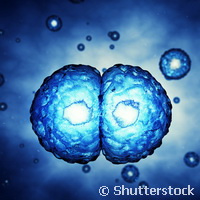Work on cell memory mechanism could help identify disease-causing mutations
When a 'mother' cell divides into 'daughter' cells - as often as once every 24 hours - the latter inherit the identity and functions of the former. A team at Sweden's Karolinska Institutet has recently unveiled the mechanisms behind this memory transmission, with help from various institutions and EU-funded projects. While it may sound anecdotal to the layperson, the way our cells continuously divide to form two identical copies is key to our very own existence. Without cell division we would not be able to grow or heal from injuries. In fact, most of the species populating our planet, including humans, simply would not exist. Despite its importance, some of the underlying mechanisms behind cell division are still unknown. This was the case of 'cell memory' transmission, a process which allows daughter cells to inherit their functions - insulin production, for instance - from mother cells. Despite many years of intense research, no general mechanism had been discovered which could explain how this works. Admittedly, the process is mind-boggling: transcriptions factors - proteins which are bound to specific DNA sequences, control the flow of genetic information and thereby determine a cell's identity and function - are erased each time a cell divides. Surprisingly enough, these binding patterns are eventually restored in both mother and daughter cells. A mystery? Not any more, according to Jussi Taipale, Professor at the Department of Biosciences and Nutrition (Bionut) at Karolinska Institutet and head of the research team behind the discovery. 'The problem is that there is so much DNA in a cell that it would be impossible for the transcription factors to find their way back within a reasonable time frame. But now we have found a possible mechanism for how this cellular memory works, and how it helps the cell remember the order that existed before the cell divided, helping the transcription factors find their correct places,' explains Jussi Taipale. Having produced the most complete map yet of transcription factors in a cell, the group found that a large protein complex called cohesin is positioned as a ring around the two DNA strands that are formed when a cell divides, marking virtually all the places on the DNA where transcription factors were bound. Cohesin encircles the DNA strand, and the protein complexes that replicate DNA can pass through the ring without displacing it. Since the two new DNA strands are caught in the ring, only one cohesin is needed to mark the two, thereby helping the transcription factors to find their original binding region on both DNA strands. 'More research is needed before we can be sure, but so far all experiments support our model,' Martin Enge, assistant professor at Bionut, Karolinska Institutet, says. Transcription factors play a pivotal role in many illnesses, including cancer and many hereditary diseases. In future, the team's discovery may therefore have direct consequences for patients with cancer or hereditary diseases, with cohesin functioning as an indicator of which DNA sequences might contain disease-causing mutations. 'Currently, we analyse DNA sequences that are directly located in genes, which constitute about three per cent of the genome. However, most mutations that have been shown to cause cancer are located outside of genes. We cannot analyse these in a reliable manner - the genome is simply too large. By only analysing DNA sequences that bind to cohesin, roughly one per cent of the genome, it would allow us to analyse an individual's mutations and make it much easier to conduct studies to identify novel harmful mutations,' Martin Enge concludes. The project was supported by the Center for Biosciences at Karolinska Institutet, Knut and Alice Wallenberg Foundation, the Swedish Research Council, Science for Life Laboratory, the Swedish Cancer Foundation, ERC Advanced Grant GROWTHCONTROL, and the EU FP7 Health project SYSCOL.For more information, please visit: Karolinska Institutet http://ki.se/?l=en(opens in new window) SYSCOL http://syscol-project.eu/(opens in new window) Project factsheet
Countries
Sweden



